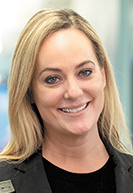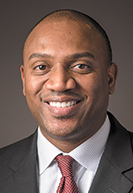Subscriber Benefit
As a subscriber you can listen to articles at work, in the car, or while you work out. Subscribe NowAcross the country, in-house counsel attorneys are taking steps to put their money where their mouth is — literally — when it comes to diversity in the legal profession.
 Polak
PolakA group of roughly 170 corporate attorneys penned a letter in early 2019 urging law firms to assign diverse attorneys to work on cases for their corporate clients. If law firms don’t prioritize diversity, the general counsel said, then the corporations will reallocate their funds to diversity-minded firms.
The letter, titled “GCs for Law Firm Diversity,” is one of several “calls to action” for diversity among those who staff corporate legal matters. Among the signatories was Indiana attorney Becca Polak, chief legal officer and secretary of KAR Auction Services, Inc., and president of TradeRev.
Polak was the only GC representing a Hoosier company who signed the open letter, but other Indiana corporations are part of the trend of in-house attorneys demanding diversity on their outside legal teams. Law firms are necessarily following suit, though firm diversity leaders say they try to take both a proactive and reactive approach to diversity and inclusion within their ranks.
 There are business advantages to employing diverse attorneys, legal leaders say, but they also say their efforts are motivated by a simple belief: prioritizing diversity is the right thing to do.
There are business advantages to employing diverse attorneys, legal leaders say, but they also say their efforts are motivated by a simple belief: prioritizing diversity is the right thing to do.
The letter
The GCs on Law Firm Diversity letter begins by noting the signatory companies “spend hundreds of millions of dollars annually on legal services … .” That money often goes to complex legal matters, the GCs wrote, such as high-stakes mergers and “bet the company” litigation.
While the GCs acknowledged that some law firms have taken a proactive approach to diversifying their legal staffs, others “continue to promote partner classes that in no way reflect the demographic composition of entering associate classes.”
“It is not enough to commit your firm to diversity during the recruiting process or to hire a diversity and inclusion officer and expect that person can effect change without the full commitment of each member of the firm,” the letter reads. “Instead, the reality is that you must consciously and personally invest in diversity and inclusion and interview, hire, mentor, support, sponsor, and promote talented attorneys who don’t always look like you or share your background.”
“We, as a group, will direct our substantial outside counsel spend to those law firms that manifest results with respect to diversity and inclusion,” the letter continues, “in addition to providing the highest degree of quality representation.”
Polak, whose own in-house legal team at KAR is about 72 percent female, said she became involved in the letter through an organization for women general counsel. The group was troubled by a photo of a large law firm’s most recent partner class, which was overwhelmingly male.
The letter was born from that experience, and since its release, Polak said she has received responses from several law firms outlining their diversity initiatives.
“I can’t say that I’ve made an edict at this point in terms of pulling work,” Polak said. “But I think this is the start, the sounding horn. At some point you’ve got to put your money where your mouth is.”
‘Good pressure’
Among the companies included in the letter are Creative Commons, Etsy, 23andMe, Lyft and TED Conferences, to name a few. Indiana-based companies such as Cummins Inc. are also prioritizing attorney diversity.
Diversity is one of Cummins’ corporate values, and that value extends to the legal team, said John Gaidoo, Cummins assistant general counsel. The Columbus-based company in recent years has undertaken a law firm convergence project that whittled the number of its outside firms from about 120 to about 20.
 Gaidoo
GaidooAmong the factors that were considered in the process was a firm’s commitment to diversity, Gaidoo said. Cummins told its law firms that it had certain expectations when it comes to the diversity of attorneys working on their cases, and firms that weren’t willing to hit the company’s desired benchmarks were removed from the roster.
But for the firms that were willing to work on their diversity levels, Cummins has implemented a collaborative program in which its in-house attorneys work directly with diverse attorneys in law firms to engage and develop them, Gaidoo said. This includes direct feedback to diverse associates and regular check-ins with law firm leaders to track their diversity benchmarks, he said.
If a law firm isn’t meeting Cummins’ desired diversity levels, the company works with firm leadership to develop an improvement plan. Firms are given time to meet their goals, Gaidoo said, but if sufficient progress isn’t made, then Cummins might take its business elsewhere.
“We’re putting good pressure on the partners,” he said.
Meeting client needs
 Lee
LeeJean Lee, president and CEO of the Minority Corporate Counsel Association, said the recent emphasis by GCs on law firm diversity is actually the fourth call to action from in-house lawyers. The first calls came in 1999 and 2004, Lee said, and the third came in 2016 when the American Bar Association passed Resolution 113 and released the Model Diversity Survey.
Lee said there is usually a surge of diversity progress immediately after those calls to action that eventually fades. But she thinks the fade will be less significant this time given the societal focus on diversity and inclusion. It’s no longer just clients who care about having diverse lawyers, Lee said — employees also want to work in diverse environments.
Law firms across Indiana are well aware of their clients’ diversity desires. Many of the larger firms in Indianapolis have implemented diversity initiatives with and without client directives.
Bingham Greenebaum Doll, for example, is heavily involved with the Leadership Counsel on Legal Diversity and hosts several diversity events, said Tonya Vachirasomboon, partner and chair of Bingham’s Diversity Committee. And at Frost Brown Todd, Indianapolis member-in-charge Heather Wilson said the firm integrated diversity and inclusion into its most recent strategic plan.
Likewise at Barnes & Thornburg, partner and diversity director Dawn Rosemond said Indiana’s largest law firm offers diversity training specifically tailored to each of its 14 offices. At Faegre Baker Daniels, the focus is on partnering with clients to implement mutually beneficial diversity initiatives.
Varied perspectives
While diversity and inclusion is not a new topic, Rosemond said the issue of law firm diversity is currently in the spotlight. The other law firm diversity leaders agreed, noting many corporate clients ask them to provide specific diversity data related to their company’s cases.
Firms and in-house legal teams are still largely trying to figure out what metrics they should use to track their diversity progress, Lee said. Wilson said Frost’s clients will request to know the exact number of women and minorities working on their cases, while Brita Horvath, Faegre’s director of diversity and inclusion, said clients will often ask about Mansfield Rule certification. The Mansfield Rule calls on law firms to make a conscious effort to consider diverse job candidates, and Faegre has been certified since the rule’s inception two years ago.
When discussing diversity and inclusion, in-house and firm attorneys overwhelmingly say it’s the right thing to do. But they also acknowledge the business benefits of bringing multiple perspectives to a legal challenge.
“I think if you have people in a room that all think the same way, you’re not getting the best result,” Polak of KAR said. “…You don’t want to just have a bunch of yes people who all have similar views.”•
Please enable JavaScript to view this content.
